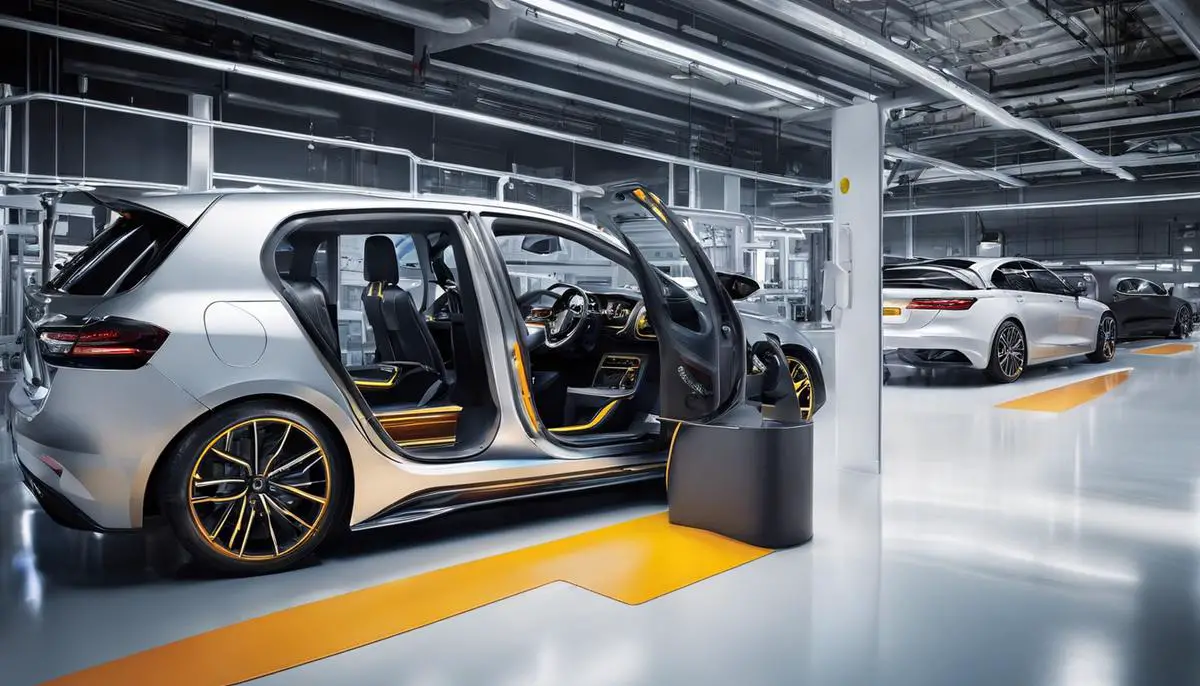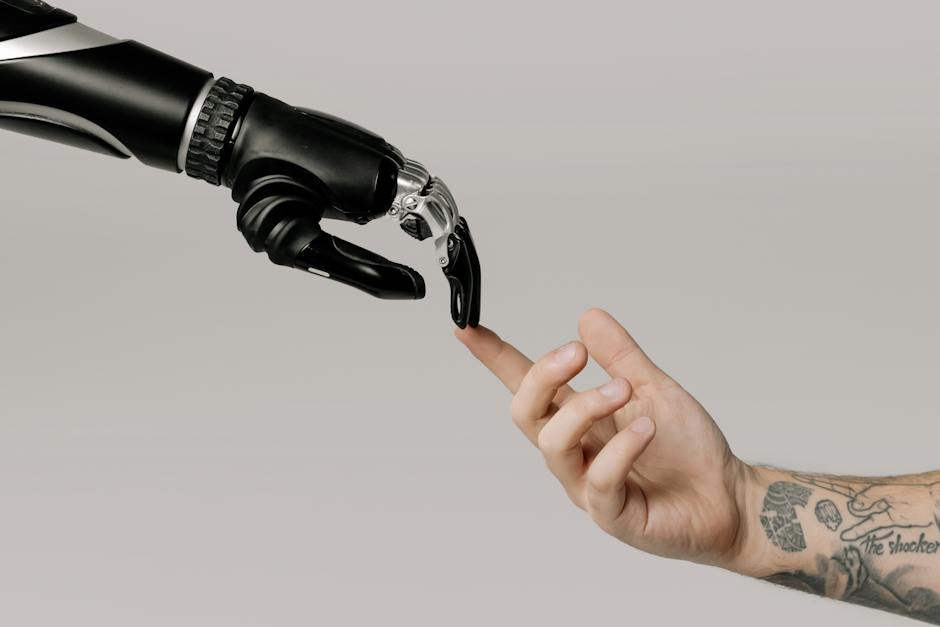In today’s digital age, the interface between humans and computers is an ever-evolving frontier, with Google at the forefront of this innovation. Their initiative into Human-Computer Understanding (HCU) is not just another step but a groundbreaking leap in this continual dance of progress. This essay delves into the intricate fabric of Google’s HCU, unraveling its core principles, the sophisticated technology that powers it, and its ultimate ambition to revolutionize the very nature of our digital interactions. By delving deep into the transformative methods HCU employs, we see how it goes beyond mere automation to a realm where technology intuitively grasps and anticipates our needs with remarkable acuity.
Understanding Google’s HCU
Google’s HCU: Pioneering a User Interaction Revolution
In a digital landscape that progressively tilts towards intuitive design, Google’s Human Computer Interaction (HCI) lab strikes gold with their latest innovation: the HCU or Human Centric Understanding. This paradigm shift extends beyond the realms of conventional interaction; the HCU concept not only simplifies technology but also transforms it into an entity that seamlessly integrates with human behavior.
At its core, HCU revolves around fine-tuning technology to understand humans better. It’s a fusion of AI, machine learning, and cognitive sciences designed to make computers adept at interpreting user needs and preferences. Imagine a world where a device predicts your questions before they are asked or suggests solutions before problems fully manifest – HCU is on a trajectory to make this a reality.
Google has consistently driven the narrative that technology should work for people, not the other way around. HCU embodies this ethos by fostering machines that are more responsive and adaptive to individual users. Through extensive data analysis and predictive algorithms, devices with HCU capabilities can learn from the nuances of human behavior, crafting personalized experiences that are both contextual and relevant.
The key lies in its multifaceted approach. HCU doesn’t just rely on one dimension of interaction; it encompasses multiple layers, from voice and gesture recognition to eye tracking and emotional inference. The result is a comprehensive understanding that transcends verbal commands or touch inputs. Google devices endowed with HCU tech pick up on subtleties that previous generations glossed over, ensuring that user engagement is nuanced and deeply interactive.
This leap forward has staggering implications for accessibility. Google’s HCU makes technology more approachable for users with diverse abilities, ensuring a more equitable digital experience. Now, differences in physical capabilities don’t translate to digital hindrance, thanks to adaptive interfaces that mold to the user’s unique method of interaction.
Moreover, HCU advances the potential for smart environments. With an enhanced capacity to decipher user intent, Google’s technology paves the way for spaces that respond to human presence intelligently. Lights that adjust not only to time of day but also to mood, heating systems that predict your temperature preference based on historical data, and entertainment hubs that curate content based on your past interactions are just a tip of the iceberg.
In a bold move, Google is swimming against the current, advocating for devices that don’t just demand attention but warrant it through empathetic and personalized interaction. It’s a decisive step towards democratizing technology, stripping away layers of complexity to make high-end innovations accessible to all.
The driving force behind HCU isn’t just to create devices that understand commands but to forge companions that comprehend context, emotion, and subtlety in human interactions. As Google continues to champion this intuitive technology, the anticipation grows for a future where user interaction is not just facilitated but deeply understood, setting a new precedent in the human-computer rapport.

Real-World Applications of HCU
HCU Technology Expands Beyond Personal Devices into Healthcare and Automotive Industries
Diving deeper into the realm of Human-Centric Understanding (HCU), current implementations span various sectors, signaling a transformative era in technology’s ability to adapt to humans. Recognizing the paramount role of HCU in enhancing human-machine interactions, industries from healthcare to automotive are adopting these innovations, capitalizing on their ability to accurately interpret and act upon human signals.
In healthcare, HCU technology is revolutionizing patient care through advanced monitoring systems. Wearables and hospital devices embedded with HCU capabilities assess patients’ physical and emotional states, adjusting treatment in real-time. This patient-tailored approach not only streamlines clinical workflows but also elevates the standard of personalized care, especially for individuals with chronic conditions who require constant monitoring.
Automotive manufacturers, on the flywheel of innovation, are harnessing HCU to redefine the driving experience. Vehicles equipped with HCU systems can detect driver fatigue and distraction, ensuring safety by alerting or even taking control if necessary. As cars become more autonomous, HCU stands as a cornerstone in building trust between drivers and their vehicles, nurturing a symbiotic relationship where each party understands the other.
Further contributions of HCU technology are found in smart homes and cities, where devices anticipate and respond to the behavioral patterns of its inhabitants. The power of HCU lies in its contribution to energy efficiency and security systems that react instinctually to inhabitant presence, such as lights that dim based on occupancy or security cameras that distinguish between residents and intruders.
Educational institutions are not untouched by the HCU wave. Adaptive learning platforms leverage HCU to customize educational content according to the learning pace and style of each student. Such platforms discern when a student struggles and adjust their difficulty, ensuring optimal challenge levels and enhancing the learning experience.
Even the retail sector taps into HCU to reshape the shopping experience. Stores equipped with HCU systems analyze shoppers’ expressions and movements to guide product placements and promotions, rendering an immersive and tailored shopping journey.
In conclusion, HCU technology transcends the lab, weaving into the fabric of diverse industries, enhancing safety, personalizing experiences, and fostering seamless interactions between humans and machines. As HCU systems continue to evolve, the line between technology serving people and understanding them blurs, marking an era where machines learn to perceive the complexities of human nuances, paving the way for a future where technology bears the hallmark of humanity.

Advancements and Future Potential of HCU
Exploring Beyond the Lab: Real-World Applications of HCU Advancements on the Horizon
As the wave of Human Centric Understanding (HCU) sweeps across the tech industries, it’s poised to revolutionize the way we interact not just with devices, but with entire systems designed to serve us. One of the most tantalizing prospects lies in healthcare, where HCU technology stands on the cusp of transforming patient care. Imagine monitoring systems not only tracking vital statistics but also interpreting discomfort from facial expressions, optimizing care in real time to each individual’s unique needs.
In the automotive realm, HCU is driving towards heightened safety and enriched driving experiences. Future vehicles will harness the power of HCU technology to adjust vehicle settings to the driver’s mood and attention level, reducing accidents through advanced driver-assistance systems that learn and adapt to the human element. This personalization goes beyond comfort, extending a protective arm through intuitive responses to human behavior.
Smart homes and cities are fertile ground for HCU applications, where technology’s ability to understand and predict human requirements will dictate energy efficiency and bolster security systems. The homes of the near future will not only respond to voice commands but will predict needs, creating living spaces that adjust lighting and temperature based on the nuanced behaviors of their occupants, or even detect unusual activity for security purposes.
The field of education stands to benefit immensely, with HCU technology laying the groundwork for adaptive learning platforms. These smart educational tools can detect when a student is struggling with a concept, adjusting the difficulty level or teaching method to suit their learning style and pace, thus crafting a highly personalized educational journey.
In the retail sector, HCU technology is set to tailor the shopping experience to each consumer. As HCU systems comprehend behavioral patterns, they could offer personalized recommendations and deals, streamlining the shopping process and enhancing customer satisfaction. In brick-and-mortar scenarios, through intelligent monitoring and interaction, retailers could modify layouts and service according to real-time, subtlety-infused customer feedback captured by HCU devices.
Each of these sectors is on a trajectory to ingrained personalization, as HCU technology promises a symbiosis between users and systems, understanding and serving at a level previously the realm of science fiction. The horizon for HCU not only holds the potential for smarter technology but also for more empathetic and intuitive experiences, heralding a future where technology truly understands the nuances of human interaction and adjusts to serve better. The promise of technology that can perceive beyond the input to grasp the intent and emotion of its human counterparts is not just on the drawing board—it’s entering the fabric of everyday life, ensuring a more responsive, adaptable, and human-centric world.

Photo by brenoassis on Unsplash
Challenges and Ethical Considerations in HCU
Navigating the Complexities of Human-Centric Understanding (HCU): Ethical and Operational Challenges
Pioneering the frontiers of technology, Human-Centric Understanding (HCU) has set a new benchmark for how devices can adapt to human nuances. This emerging field, however, is not free from its array of formidable challenges. As HCU systems learn to interpret the subtleties of human behavior and preferences, ensuring ethical standards and managing intrinsic complexities becomes paramount.
Data Privacy: A Core HCU Challenge
The cornerstone of HCU’s efficacy lies in its ability to collect and analyze vast amounts of personal data. From voice patterns to eye movements, the depth of data required to accurately predict user needs is extensive. A major challenge arises in protecting this sensitive information. With HCU technologies, the risk of data breaches is not just disturbing but can be devastating, potentially revealing intimate details of an individual’s life and preferences. Finding a balance between data collection for user benefit and respecting user privacy stands as a critical ethical battleground in HCU development.
Bias and Discrimination in Algorithmic Decision-Making
Another significant hurdle is the potential for built-in biases within HCU algorithms. Given that these systems are designed based on datasets that may not be wholly inclusive, there is a possibility that the technology might inadvertently perpetuate societal biases. The spectrum of human diversity must be considered in data curation to prevent discrimination, whether it concerns race, gender, age, ability, or socio-economic status. Creating algorithms that are as unbiased as possible is crucial for equitable HCU experiences.
The Conundrum of Consent
As HCU devices seamlessly integrate into the fabric of daily life, questions about consent come to the fore. Do users fully comprehend what they are consenting to when they allow HCU systems to glean data from their interactions? Transparency is vital, and so is the simplification of consent processes. Users must be provided with clear choices about their data and how it’s used without being overwhelmed with complex terms of service agreements.
The Agency Dilemma
The more intuitive HCU technology becomes, the more it risks infringing on human agency. When a system becomes too predictive, preempting human needs without explicit prompts, it can create discomfort and raise questions about who is in control: the user or the technology? Ensuring that users maintain the final say over their technological experiences is an operational and ethical imperative.
Continuous Learning and Adaptation Challenges
HCU systems are designed to evolve, learning from continuous interaction with users. However, managing this continuous learning presents challenges. Systems must be robust enough to adapt to changing human behaviors and contexts without programming errors or lapses in performance. Ensuring that continuous learning leads to improvement, rather than deterioration of user experience, necessitates diligent monitoring and regular updates.
The Intersection of HCU and Human Rights
Technologies imbued with HCU capabilities hold the potential to transcend mere convenience, challenging fundamental aspects of human rights and dignity. How these systems are implemented can affect freedom of expression, association, and even the right to privacy. The roadmap for HCU development must be paved with comprehensive ethical considerations that are enshrined in international human rights standards.
As the evolution of HCU marches on, the challenges it brings to light are as intricate as the systems themselves. Addressing these issues demands a collaborative effort among technologists, ethicists, and policymakers to ensure that HCU not only meets its promise but does so with respect for the core values of the society it aims to serve. With foresight and commitment to ethical principles, HCU can shape a future where technology understands humanity as well as it serves it.

How to Access and Utilize Google’s HCU
Moving beyond the surface benefits HCU technology offers in creating personalized user experiences, it’s pivotal to dissect how both users and developers can harness the full potential of Human Centric Understanding to bolster technological interfaces. The transformative power of HCU lies not just in its recognition of human nuances, but also in providing a sandbox for innovation that transcends traditional interactive paradigms.
For starters, users gain unprecedented command over their digital landscape through HCU technology’s prowess in context awareness. Devices and platforms using HCU aren’t just reactive; they anticipate needs and adapt to user behavior dynamically. In an era where time is the new currency, such proactive assistance is not a luxury but a necessity. From smart thermostats gauging the perfect room temperature to voice assistants that learn and remember preferences, HCU empowers users with an ecosystem that evolves as an extension of themselves.
Developers, on the other side of the spectrum, are the architects shaping this new frontier. Access to HCU tools and libraries propels them into crafting experiences that are not only intelligent but also resonate on a human level. Open-source frameworks and APIs in the realm of HCU present fertile ground for developers to prototype their visions swiftly. Features like emotion detection algorithms or natural language processing capabilities can be embedded seamlessly into applications, making the interactivity quotient soar.
Accessibility becomes a cornerstone of technology with HCU as its underpinning, reinforcing inclusivity. Developers have the unique opportunity to engineer solutions that cater to the diverse tapestry of human abilities. Innovations such as eye-gaze control for individuals with motor impairments or real-time sign language interpretation services crack open new channels for interaction that were once deemed improbable.
Not to be sidestepped, HCU’s implications in data analytics are groundbreaking. Users can receive tailored insights and recommendations, stemming from their digital footprints that are now understood through a human-centric lens. For developers, this translates into data-driven narratives that are not just about user behavior but the why behind it, allowing for more nuanced product development and iteration.
Moreover, HCU ushers in a new dimension of security and privacy. Users can traverse the digital realm with more confidence as HCU-equipped systems are designed to discern between legitimate users and potential threats with higher precision. Similarly, developers tasked with creating these secure environments can integrate advanced biometric authentications and behavior-based fraud detection systems that align with HCU philosophy.
On the cusp of widespread IoT integration, HCU becomes instrumental for both users and developers in achieving synergy between devices. Interoperability ceases to be a challenge as HCU leans on context and user intent, rather than rigid command-based programming, to drive interactions within the IoT tapestry.
In conclusion, as we transition to an era where technology ceases to be a tool and becomes a partner, HCU stands at the vanguard of this shift. For users, it’s about elevated convenience and relevance, while developers wield the tools to build the future, one human-centric experience at a time. As the boundaries between humans and computers blur, HCU emerges not just as an innovation but an imperative, forging pathways where technology understands us as inherently as we understand ourselves.

As we have explored the intricate maze of Google’s Human-Computer Understanding, it’s clear that it holds the keys to unlock an unprecedented synergy between us and our digital companions. The narrative of Google’s HCU is not only about the advancements made but also about the journey ahead, marked by ceaseless curiosity and the relentless pursuit of innovation. The true essence of HCU lies in its ability to evolve, adapt, and become more attuned to our human elements. It is a journey we are all a part of, and as we venture forward, the ramifications of this technology on our lives, industries, and societal fabric are poised for an extraordinary transformation. It is up to us, users, and creators alike, to harness the power of HCU responsibly, shaping a future that resonates with the best of our human values and technological prowess.

